Today we would like to share a breakdown of how we can achieve any effect.
Sometimes when a client wants to create a scene for a TV show, film or advertisement they can hit a wall pretty quickly. A script is not limited by anything, it can be as wildly imaginative and dangerous as it needs to be. This however, is not the case for other stages of production and is where Visual Effects (VFX) can help make the impossible, possible again.
This is how we can often help with Safety training videos, enabling us to show scenarios which are too dangerous for a stunt actor.
We have already discussed when to use green screen in an earlier blog post which can be found here, however here we will look at the use of a green screen to create a specific, dangerous or an otherwise expensive scene in a fictional background.
For this week, we will break down an actual scene from a recent video we created.
The shot we were tasked with creating involved a large outdoor scene where a SWAT team bursts onto the scene and takes the lead actor away – whilst the same actor’s doppelganger looks on!
We took at least 10 different live action shots from the green screen to build up our scene, none of this included the actual environment (which was all computer generated later on).
One simple benefit of using the green screen (which a lot of people don’t realise) is in the ability to scale the footage down. This was one of the first things we had to do as the green screen studio (although well equipped) simply was not large enough to position a camera as far away from the actor as the director wanted.
The actual green screen footage was limited by the green screen wall which was 15ft wide, we needed to put our actors into a scene over 10 times that width, taking up an entire street!
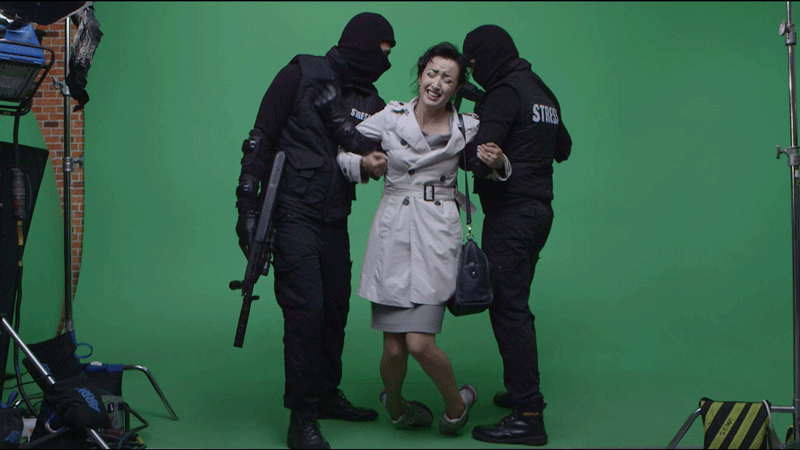
From this first animated gif we can see the start of the process, we remove the green screen and frame the main content where we wish based on the storyboards. We then edit the lighting around them to help blend them into their surroundings, this lighting is created from the actual 3D scene image and the process is call light wrapping.
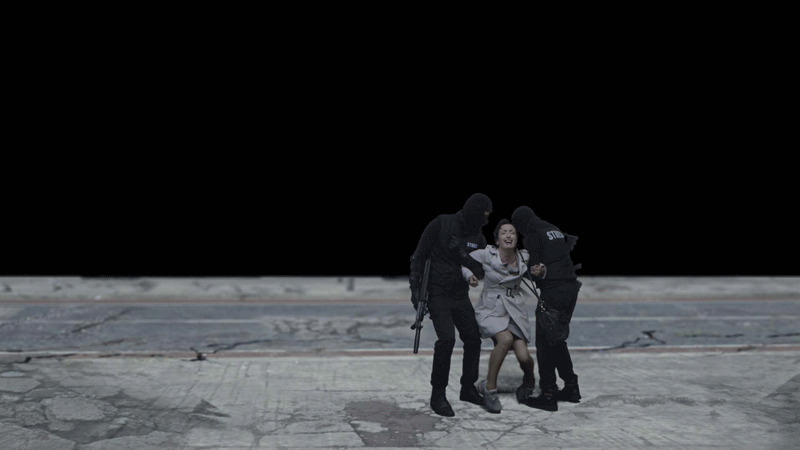
We then place the floor and background into the scene, which we have as separate layers to give more individual control. We build the environment using 3D software, but even at this stage it still leaves a lot to be desired. We need to add in many layers of details, including textures, reflections, shadows, atmospherics and lighting.
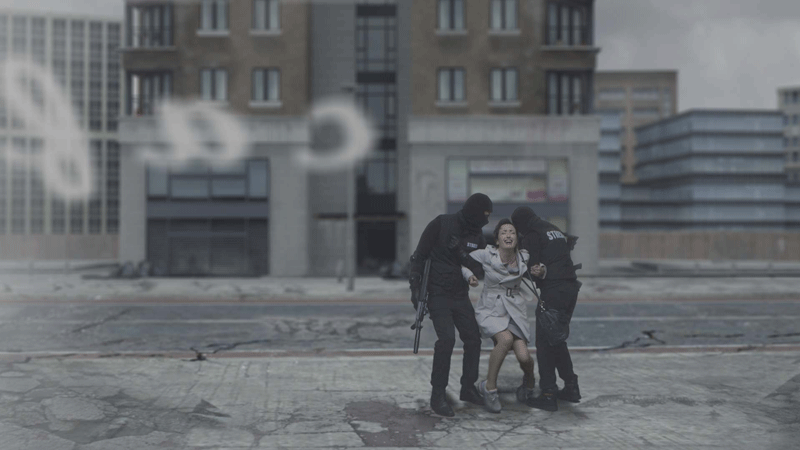
We then add some some more 3D elements, such as the hovering helicopter and the real-world physics and dynamics of the trees, which would interact with air created by the rotating blades of the helicopter.
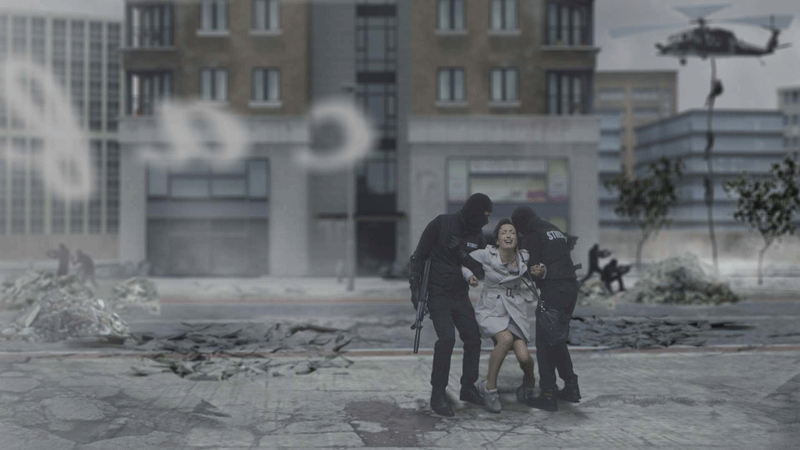
We then add some more 3D and even 2D elements into the scene. The tank is fully 3D and moves around the scene whereas the broken-down truck is a still, 2D image and does not need to move.
This allows us to be more economical with time and budget.
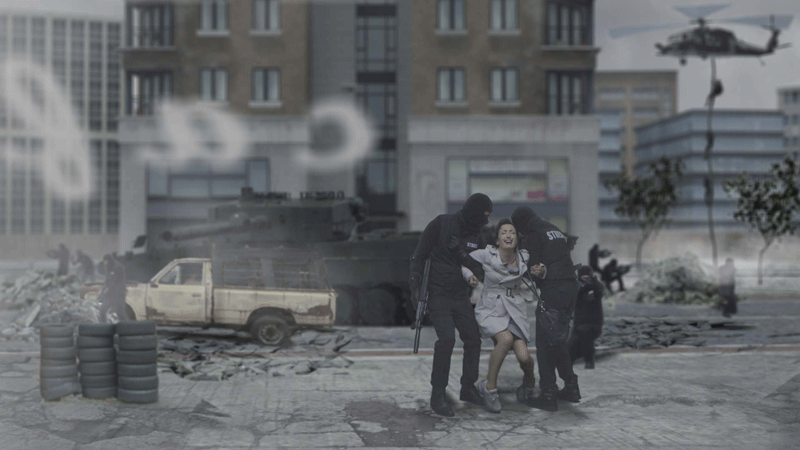
We then add even more green screen characters to the scene which allows us to reuse the same actors and smaller space. This conveniently suits our scene as we want the SWAT team members to not be individuals in this scene but all be part of a single group, however when recording the separate scenes, we could change the wardrobe and have a whole different army.
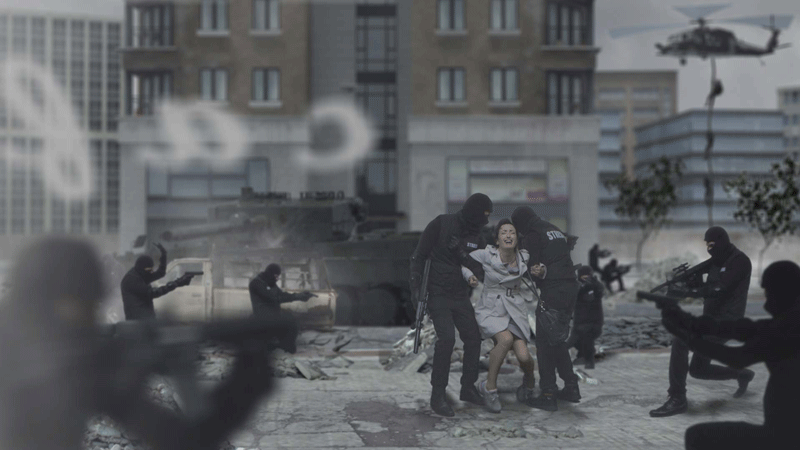
We then finish the scene by adding some atmosphere in our compositing software along with more shadows, actors and reflections.
We can see a small section of the clip below.
Think we could help with your video production? Contact us today on +353 1 44 33 839 or via our contact page.
See what GLUE is up to on Facebook!
GLUE, Bringing reality and imagination together.
